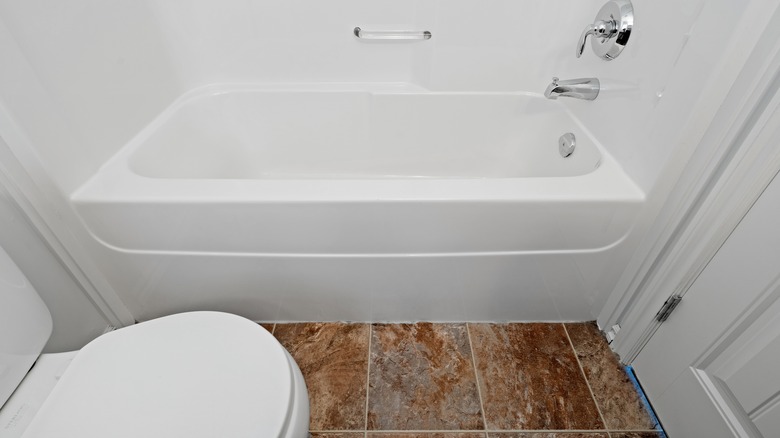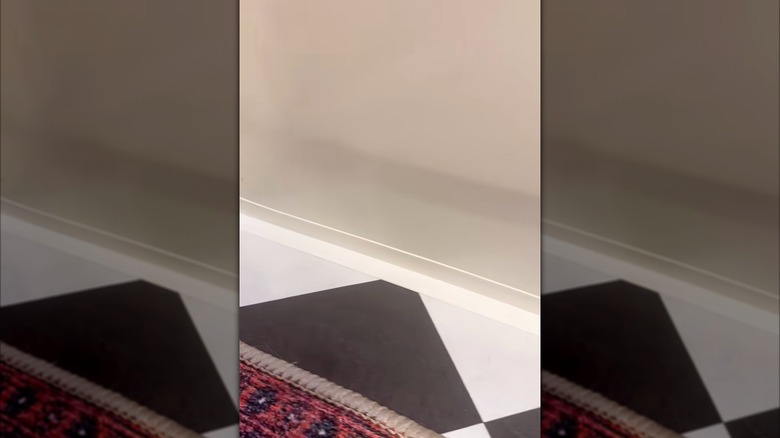Does Peel And Stick Caulk Tape Really Work?
Whether you live in an apartment or own a home, we can all agree on one thing: bathroom caulk is a significant pain. Some versions are super susceptible to mold and mildew, turning into a literal strip of grime around your bathtub. Others simply discolor over time. The once-crisp white caulking fades into a yucky cream color that you certainly didn't choose. Sure, you could scrape away the old material and reapply the caulk around the bathtub, but it's not nearly as easy as it looks. It takes time, patience, and a steady hand — and let's not forget the investment in a caulk gun. Even then, what if the new caulk does the same thing, discolors or molds all over again? Perhaps this is what led you to discover peel-and-stick caulk tape. But does it actually work? And are there any downsides to using it?
It appears that customers have mixed feelings about the product. Some say it works really well, while others complain it doesn't stick. After checking out a few different brands, the consensus seems to be the same: some people swear by it, while others warn that it's not worth the time or money. For context, peel-and-stick caulk is precisely what it sounds like: a flexible strip you apply around the edges of your bathtub where it meets the walls and floor. The concept of the product is to give you the benefits of caulking without the messy application. Just peel, stick, rub down, and voilà, no more dirty spots or gaps. Still, customers have pointed out a few downsides worth knowing before you try it yourself.
The pros and cons of using peel-and-stick caulk tape
Peel-and-stick caulk tape isn't all that it's "caulked" up to be, at least according to customer reviews across multiple brands. Before applying it, most instructions recommend removing existing caulk, which can sometimes be challenging to do. While some brands claim you can stick it right over old caulk, this can make it harder to adhere due to the uneven texture, and you could potentially trap in any mold that's already growing.
Some people have had success with placing peel-and-stick caulk by pressing it down firmly or using a hair dryer to help it adhere better; others complained that it lifted up almost immediately after application. Corners also seem tricky to navigate with this type of caulking since the tape is thick and firm. You may need to cut separate strips around the tub and walls. And if your bathtub has small grooves between the tiles, that's another challenge. The tape doesn't fit into those spaces, which means water can drip behind it, causing the tape to come loose or, worse, keeping the area damp and promoting mold growth.
That said, some users prefer the peel-and-stick caulk tape, saying it provides a nice flush seal and that one package of it is usually enough to cover an entire bathtub. Many also find it handy for filling the gap between the tub and the floor, or even around the kitchen where countertops separate from the wall. But this isn't a five-minute project as some suggest. You'll need to prep the surface first and give it a good 12 hours with no water hitting it.

